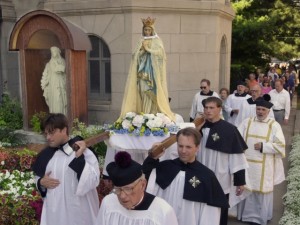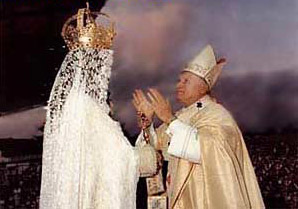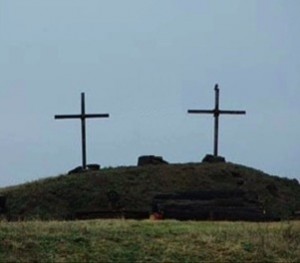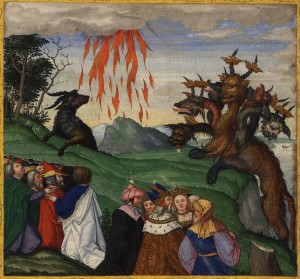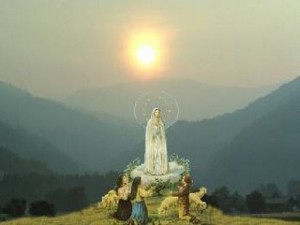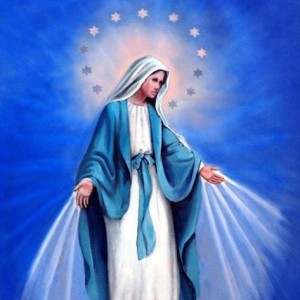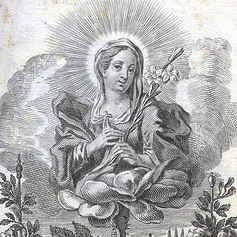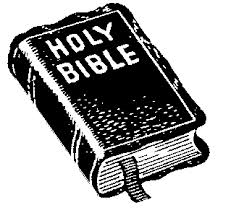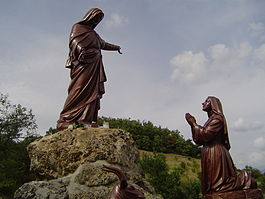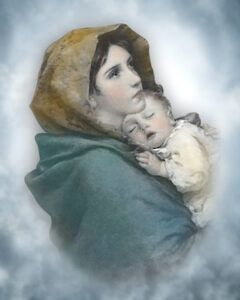
It has become fashionable of late to convert to Roman Catholicism, a phenomenon with which we interact occasionally in our podcast, The Diving Board. It is there that we examine, and then refute, the reasons the typical Protestant gives when deciding to convert. The problem of Mary is often the last stumbling block to fall, but when it does, the floodgates of hyperlatria open wide, and an embarrassing superfluity of worship is heaped upon her. After all, the Roman Catholic priest can “command God … and make Him come down to the altar” to be offered in the Sacrifice of the Mass, but has “no commands to give His holy Mother, who does as She pleases.” So taught the Apparition of Mary at La Laus, France in 1664. And on that basis, the apparitions were determined to be authentic. Not because “Mary” appeared as a humble handmaiden but because she had appeared as Virgin Most Powerful and Queen of the Universe, utterly free of any constraint to her will. Unlike her hapless “Son” who gets bossed around daily like a chump, nobody tells Mary what to do. That is why the Apparition of Mary at La Laus was considered authentic, and the curse of hyperlatria is the wretched misfortune that awaits the Protestant who stumbles into devotion to her.
 Follow
Follow
